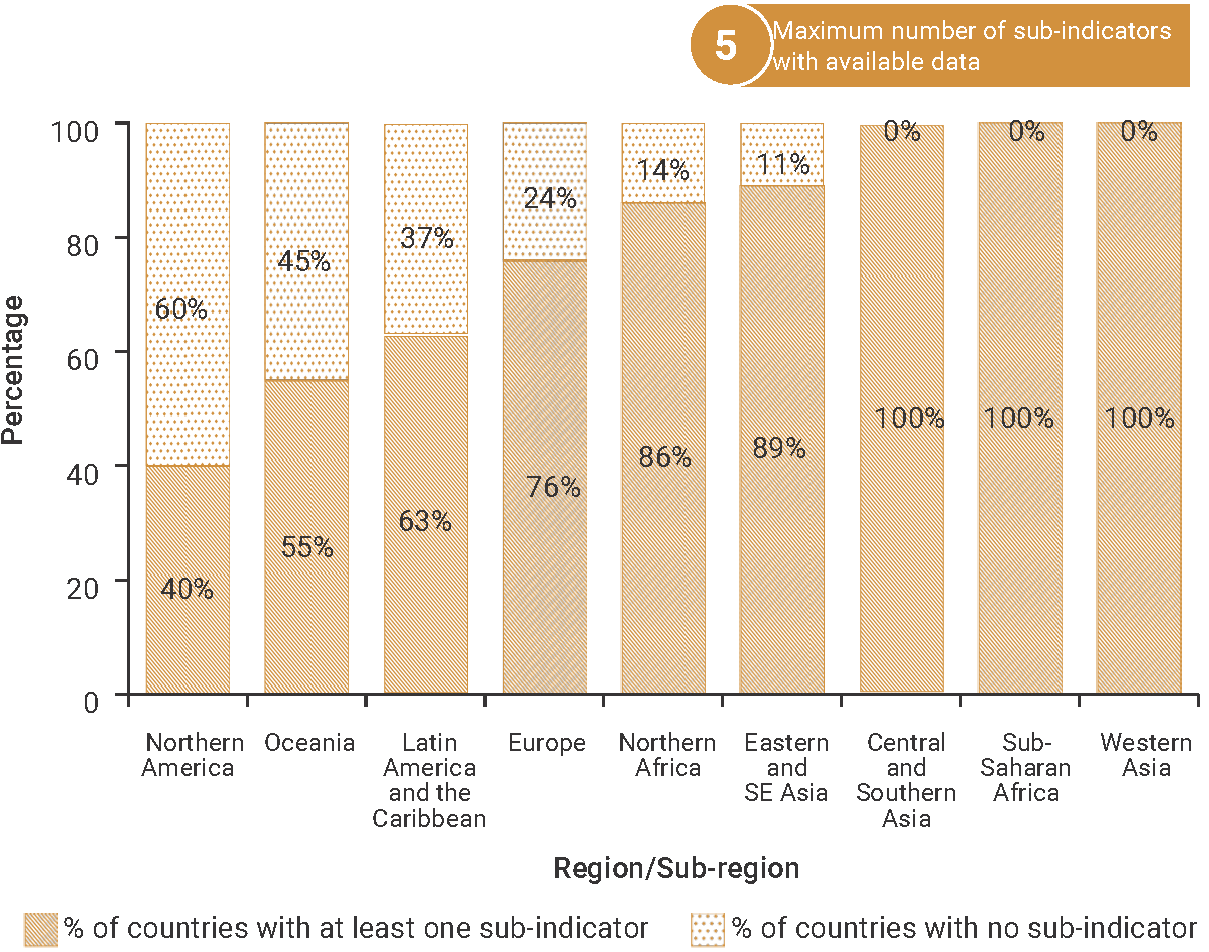SDG Indicator 12.4.1: Number of parties to international multilateral environmental agreements on hazardous waste, and other chemicals that meet their commitments and obligations in transmitting information as required by each relevant agreement
1. Key features and metadata
Definition: The indicator monitors the number of Parties to five Multilateral Environmental Agreements (MEAs), –namely the Montreal Protocol and Rotterdam, Basel, Stockholm and Minamata Conventions related to hazardous waste and other chemicals –which have met their obligations under each of these MEAs.
| Sub-indicator | Disaggregated by |
|---|---|
|
SG_HAZ_CMRMNTRL Parties meeting their commitments and obligations in transmitting information as required by Montreal Protocol on hazardous waste, and other chemicals (%) |
No current data disaggregation available.
|
|
SG_HAZ_CMRROTDAM Parties meeting their commitments and obligations in transmitting information as required by Rotterdam Convention on hazardous waste, and other chemicals (%) |
|
|
SG_HAZ_CMRBASEL Parties meeting their commitments and obligations in transmitting information as required by Basel Convention on hazardous waste, and other chemicals (%) |
|
|
SG_HAZ_CMRSTHOLM Parties meeting their commitments and obligations in transmitting information as required by Stockholm Convention on hazardous waste, and other chemicals (%) |
|
|
SG_HAZ_CMRMNMT Parties meeting their commitments and obligations in transmitting information as required by Minamata Convention on hazardous waste, and other chemicals (%) |
Sources of information: National Focal Points and/or designated national competent authorities of each one of the five Conventions and electronic reporting systems (Basel, Rotterdam and Stockholm conventions).
Related SDG Indicators: 12.4.2 ((a) Hazardous waste generated per capita; and (b) proportion of hazardous waste treated, by type of treatment), 12.5.1 (National recycling rate, tonnes of material recycled), 3.9.1 (Mortality rate attributed to household and ambient air pollution), 3.9.2 (Mortality rate attributed to unsafe water, unsafe sanitation and lack of hygiene), and 3.9.3 (Mortality rate attributed to unintentional poisoning).
2. Data availability by region, SDG Global Database, as of 02 July 2025[1]

3. Proposed disaggregation, links to policymaking and its impact
| Proposed disaggregation | Link to policymaking | Impact |
|---|---|---|
|
Parties meeting their commitments and obligations in transmitting information as required by the five conventions, by type of required information (%):
Applies to:
|
The purpose of this disaggregation is to highlight the implementation by Parties to the five Conventions of their respective reporting obligations (OPN n.d.). It provides insight for policymakers to monitor the adoption of national, compliant legislative and regulatory frameworks for enforcing the particular provisions of each of the five international agreements. Beyond the control of formal compliance with the reporting requirements, it is also useful for tracking the practical measures put in place to ensure the environmentally sound management of hazardous waste and other chemicals. It also tracks institutional arrangements, programmatic frameworks or allocated resources (i.e. human, technical or financial) and assesses the effectiveness of those policies and interventions (UNEP 2019c; UNEP n.d.b). This disaggregation is in line with the requirements of the five MEAs (UNEP 2010; UNEP 2011; UNEP 2019d; UNEP 2020b; UNEP 2021g;). |
Monitoring the different types of reporting requirements to the five MEAs will contribute to Parties controlling, storing, treating, and disposing of hazardous waste and other chemicals in ways that minimize harmful impacts on human health and the environment. This will also create incentives for industries to reduce the production of chemicals and hazardous waste at source and to promote a circular economy by developing the reuse, recycling and recovery of end-of-life products. Enhancing the reporting to the five MEAs also contributes to the development of early warning systems, shared responsibility, better informed decision-making, and transparency. This willgenerate multiple benefits for the population and the environment. For example, a reduction of deaths or illness due to chemical exposure or soil and water pollution and their adverse consequences (UNEP 2019c; UNEP n.d.b). |
[1]A sixth sub-indicator’s data is available representing the Parties meeting their commitments and obligations in transmitting information as required by all five Conventions.

